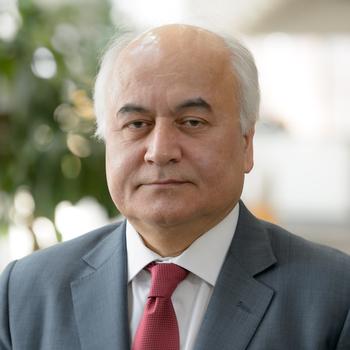Argonne Scientist Ali Erdemir named AAAS fellow and elected to the National Academy of Engineering

Ali Erdemir, an Argonne Distinguished Fellow and senior scientist, was recognized for his “scientifically or socially distinguished efforts to advance science or its applications,” by the American Association for the Advancement of Science (AAAS). According to the award citation, Erdemir was elected for his “distinguished contributions to the fields of materials science, surface engineering and tribology and other related disciplines including friction, wear, and lubrication.”
Throughout his career, Erdemir has focused on a branch of materials science called tribology, which focuses on the study of lubricants, friction and wear. He holds 23 patents for various inventions, including a boric acid-based lubricant and a near-frictionless carbon coating. He has also won six R&D 100 awards, also known as the “Oscars of Innovation.”
Taken as a whole, Erdemir’s research focuses on nanoscale design and large-scale manufacturing of new materials, coatings, and lubricants for new applications in manufacturing, transportation or other energy conversion systems.
Erdemir graduated from Istanbul Technical University in 1977 and received his Ph.D. in materials science and engineering from Georgia Tech in 1986. He began his career at Argonne in 1987.
Ali Erdemir also was elected to the National Academy of Engineering for contributions to the science and technology of friction, lubrication, and wear.
Election to the National Academy of Engineering is among the highest professional distinctions accorded to an engineer. Academy membership honors those who have made outstanding contributions to "engineering research, practice, or education, including, where appropriate, significant contributions to the engineering literature" and to "the pioneering of new and developing fields of technology, making major advancements in traditional fields of engineering, or developing/implementing innovative approaches to engineering education."
Source: Argonne National Laboratory; National Academy of Sciences